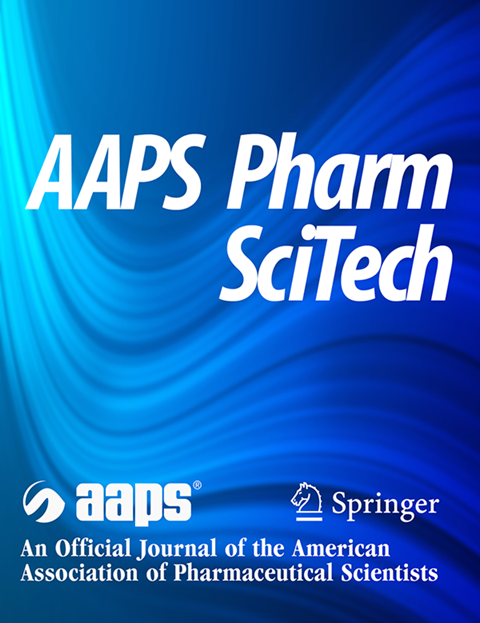Towards Enhanced Solubility of Cannabidiol: Preparation and Evaluation of Cannabidiol Solid Dispersions Using Vacuum Compression Molding
Abstract
The present study aims to develop and characterize cannabidiol (CBD) solid dispersions using Vacuum Compression Molding (VCM) to enhance the drug solubility and release profile. Solid dispersions of CBD and polymers were processed using VCM at 130 °C for 4 min after a prior physical mixing. Five percent w/w of CBD was used with 5% w/w of poloxamer 188 and 90% w/w of polymeric carrier (Polyethylene Oxide, PEO-N80 or Hydroxypropyl cellulose, HPCEF). Discs were collected and milled to obtain formulations (F1V, F2V). The degradation temperature of CBD was determined using Thermogravimetric Analysis (TGA). The formulations were further characterized using differential scanning calorimetry (DSC), scanning electron microscopy (SEM), and Fourier-Transform Infrared Spectroscopy (FTIR). In vitro dissolution testing of pure CBD and formulations was evaluated using USP apparatus II. TGA showed that CBD degradation occurs after 200 °C. FTIR spectra of formulations indicate potential interactions between the drug and polymers. DSC thermograms of F1V showed a thermal peak at 65 °C that could correspond to PEO-N80. F2V did not show any of the thermal event peaks, which suggests the conversion of the drug to the amorphous state. Images from the SEM showed irregular surfaces for both formulations. The release profile showed an increase in the CBD dissolution rate by 4.75 folds for F1V and 3.63 folds for F2V in four hours. In this study, solid dispersions of CBD formulations were successfully achieved. The VCM technology has proven to be successful in formulating solid dispersions of CBD for early-stage drug development.
Graphical Abstract

 求助内容:
求助内容: 应助结果提醒方式:
应助结果提醒方式:


